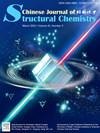Close π-π stacking facilitated intermolecular charge separation in self-assembled perylene monoimide for photocatalytic hydrogen production
IF 5.9
4区 化学
Q1 CHEMISTRY, INORGANIC & NUCLEAR
引用次数: 0
Abstract
The tightness of π-π stacking in supramolecular organic semiconductors plays a crucial role in governing the spatial separation and migration dynamics of photogenerated charge carriers, ultimately determining their photocatalytic performance. To achieve close π-π stacking, the suitable design of molecular structure is essential. Therefore, two isomers of pyridine carboxylic acid-modified perylene monoimide (PMI) were designed and synthesized, namely PM5A and PM6A. In aqueous solution, these molecules self-assemble into aggregates, which exhibit distinct stacking properties and optical characteristics. Upon photoexcitation, the loose π-π stacking of PM5A favors the generation of charge-transfer excitons (CTEs) over charge-separation excitons (CSEs). In contrast, PM6A, stabilized by intermolecular hydrogen bonds and possessing close π-π stacking, undergoes efficient charge separation (CS) to produce CSEs within 4.5 picoseconds. When incorporated into metal-insulator-semiconductor (MIS) photosystems with polyvinylpyrrolidone (PVP)-capped Pt, the Pt/PVP/PM6A system demonstrates a hydrogen evolution rate (HER) of 8100 μmol g−1 h−1, nearly five times higher than that of the Pt/PVP/PM5A system. Additionally, the maximum apparent quantum efficiency (AQE) reaches approximately 2.1% under irradiation with light of a single wavelength of λ = 425 nm.

紧密的π-π堆叠促进了光催化制氢的苝单亚胺分子间电荷分离
超分子有机半导体中π-π堆积的紧密性对光生载流子的空间分离和迁移动力学起着至关重要的作用,最终决定了它们的光催化性能。为了实现π-π的紧密堆积,分子结构的合理设计至关重要。为此,设计合成了吡啶羧酸修饰过二烯单亚胺(PMI)的两个异构体PM5A和PM6A。在水溶液中,这些分子自组装成聚集体,表现出明显的堆叠特性和光学特性。在光激发下,PM5A松散的π-π堆叠有利于产生电荷转移激子(cte)而不是电荷分离激子(cse)。相比之下,PM6A通过分子间氢键稳定并具有紧密的π-π堆积,可以在4.5皮秒内进行有效的电荷分离(CS)以产生CSEs。当以聚乙烯吡咯烷酮(PVP)包封Pt加入金属-绝缘体-半导体(MIS)光系统时,Pt/PVP/PM6A体系的析氢速率(HER)为8100 μmol g−1 h−1,是Pt/PVP/PM5A体系的近5倍。此外,在λ = 425 nm单波长光照射下,最大表观量子效率(AQE)达到约2.1%。
本文章由计算机程序翻译,如有差异,请以英文原文为准。
求助全文
约1分钟内获得全文
求助全文
来源期刊

结构化学
化学-晶体学
CiteScore
4.70
自引率
22.70%
发文量
5334
审稿时长
13 days
期刊介绍:
Chinese Journal of Structural Chemistry “JIEGOU HUAXUE ”, an academic journal consisting of reviews, articles, communications and notes, provides a forum for the reporting and discussion of current novel research achievements in the fields of structural chemistry, crystallography, spectroscopy, quantum chemistry, pharmaceutical chemistry, biochemistry, material science, etc. Structural Chemistry has been indexed by SCI, CA, and some other prestigious publications.
 求助内容:
求助内容: 应助结果提醒方式:
应助结果提醒方式:


